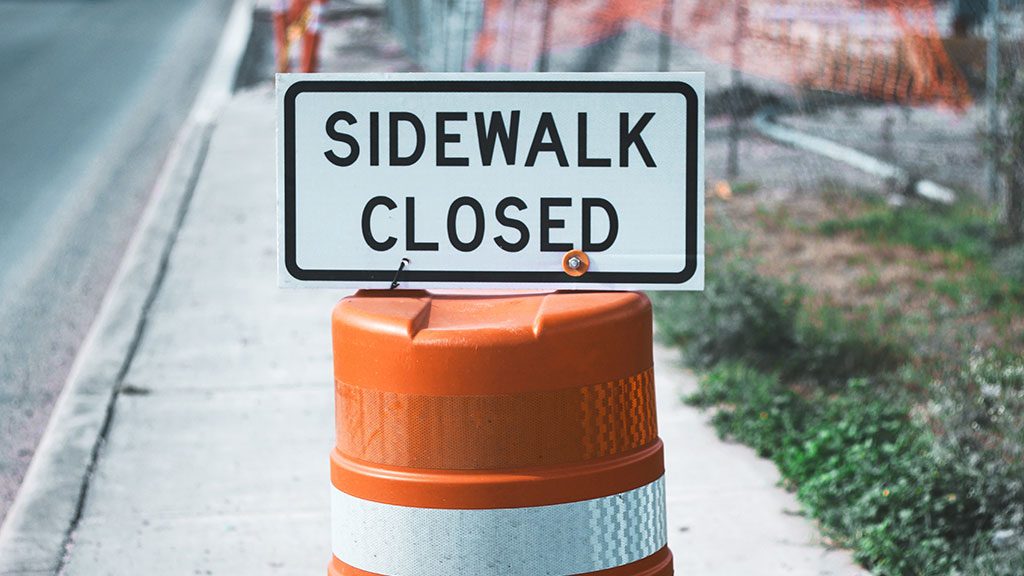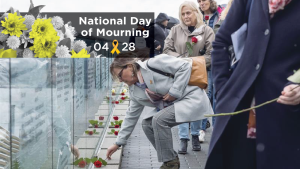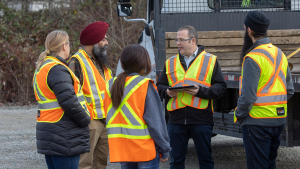According to BuildForce Canada, an estimated 132,700 workers, or 21 per cent of the labour force, will retire between 2018-2027 and will have to be replaced.
BuildForce says demand for replacement workers will be met, in part, by an estimated 125,800 new entrants to the construction workforce aged 30 and younger.
Although young workers bring a welcome energy and enthusiasm to the work site, many of them aren’t yet able to see hazards and assess risks as well as older, more experienced workers.
As a result, young construction workers are at a greater than average risk of death or injury.
Construction and safety associations are certainly aware of the dangers young workers face.
Tammy Oliver, senior director of the BC Construction Safety Alliance (BCCSA), says the alliance offers courses for people who are new to the industry or who have not had formal safety training in construction, roadbuilding and electrical industries.
The BCCSA also has a hazard awareness training program to help young workers identify risks.
In addition to the BCCSA, WorkSafeBC has safety programs aimed at young and new workers.
The Young Worker Speaker program was created to help secondary schools and parent advisory councils that are interested in young worker health and safety.
WorkSafeBC spokeswoman Erica Simpson says the program, which deals with youth health and safety on the job, supplies speakers with unique expertise and experience.
The idea behind the program is that the best way to educate young workers about safety is to let them hear from people their own age who have experienced a serious workplace injury.
Young construction worker injuries and deaths are a multi-faceted problem, says Terry Bogyo, an independent workers compensation researcher and consultant in B.C.
“The loss of limbs, function and life of anyone is serious, but, in the case of young workers, the potential years of life lost or the disability-adjusted years of life imposed are that much greater,” he says.
When a young worker is injured or killed the impact goes beyond the emotional aspects.
“We all suffer the loss of potential, of a lifetime of what might have been, but for the injury,” Bogyo says.
The industry needs to recognize and act on the added risk young workers face.
“I’m not talking about the annual young worker safety campaigns that stress the right to refuse unsafe work or raise awareness of hazards,” Bogyo says. “That’s a bottom-up approach. We need a top-down change in what is important on a work site.”
Bogyo says young workers’ enthusiasm to prove themselves will lead them to do what the boss wants.
“Supervisors need to make it clear all the time that safety trumps production,” he says.
If every communication, every interaction between a young worker and the supervisor includes safety messages, site safety will increase and violations of safe-work procedures will decrease.
Bogyo says he is in favour of age restrictions where risks are high.
In Saskatchewan, for example, people under 18 cannot work underground or in any activity that requires the use of an atmosphere-supplying respirator.
People under 16 cannot work on a construction site or in a woodworking establishment.
“The problem with age restrictions is that people do not always disclose their age,” Bogyo says. “Many construction careers start by working with a family member or friend in what may not technically be employment.”
Another approach to tackling young worker safety is training.
“In Australia, which has similar multi-jurisdictional issues to Canada, there is a required Construction Induction Training, or White Card, for anyone employed or engaged to perform construction work in the building and construction industry,” says Bogyo. “Each state has its own version and nuances but, similar to the Red Seal idea, a White Card from one jurisdiction is accepted in others.”
Bogyo says the White Card system doesn’t completely relieve employers from their responsibilities to orient and train new workers.
“But it does mean that everyone is working from the same vocabulary and using the same safety concepts as a starting point,” he says.
To become more effective in dealing with young worker injury and death, workers and their employers need to think harder about hazards and their associated risks, instead of focusing on rules and regulations, says Vancouver health and safety consultant Jeff Lyth.
“Work is becoming more complex all the time,” says Lyth. “As a result, there are more ‘unknown unknowns’ that workers and their employers need to be prepared for.”
Lyth says General Motors pioneered a new approach to safety by switching from conventional insurance metrics to “sentinel events.”









Recent Comments